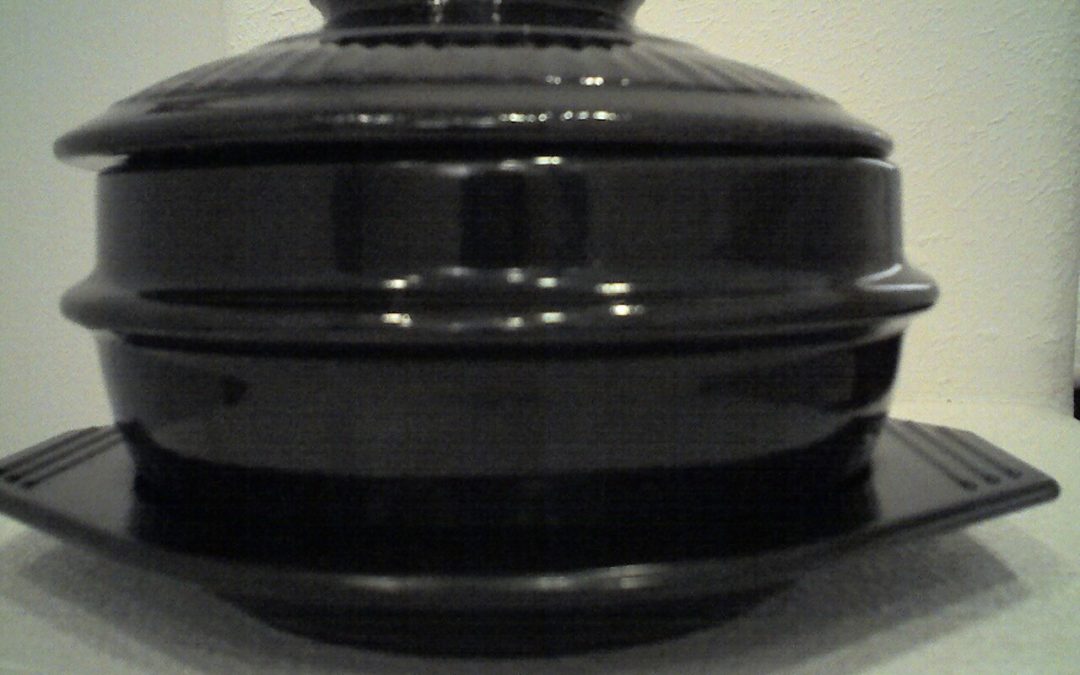
Yes, this recipe is a bit involved, but just trust me, this is really worth the effort. Actually, come to think about it, it’s not all that time consuming if you are managing that time well.
This is one of my very treasured recipes, one that i received directly from Grandmaster Tae Yun Kim. She told me this soup reminded her of Korea, when she grew up during the war time. Back then, the soup was a lot more “bare basics” and didn’t have any meat or mushrooms or anything fancy. The current version is old-style Korean with a new twist. But most of all its just plain good.
You start with a base of oxtail soup. Here’s a quick primer if you are not familiar with that. You get a package of oxtails,  and put them in a pot with cold water, crushed garlic and kosher salt. Bring to boiling, then let boil for about 15 minutes or until there is a lot of dark foam on top. Drain the oxtails, rinse well, and wash out the pot. Bring water to boiling again, add the oxtails, crushed garlic and Kosher salt. Cover, and let boil on low heat at least an hour, but you can let it boil for several hours – the soup only gets better. It’s best when it gets milky white. The meat will get so tender it will fall off the bones.
and put them in a pot with cold water, crushed garlic and kosher salt. Bring to boiling, then let boil for about 15 minutes or until there is a lot of dark foam on top. Drain the oxtails, rinse well, and wash out the pot. Bring water to boiling again, add the oxtails, crushed garlic and Kosher salt. Cover, and let boil on low heat at least an hour, but you can let it boil for several hours – the soup only gets better. It’s best when it gets milky white. The meat will get so tender it will fall off the bones.
About half hour before you want to serve this soup, bring some water and salt to boiling in a seperate pot, and add a handful of chap chae noodles (glass noodles, made of sweet potatoes) per serving of soup you want to make.  Cook until still very al dente, then rinse with cold water and set aside.
Cook until still very al dente, then rinse with cold water and set aside.
Meanwhile, cut a handful green onions – the white part into 1 inch long chunks and put right in soup. The rest, chop very fine and set aside. For the suchebi = dumplings, you can either start from scratch – and any recipe for noodle dough you have will probably do fine. I like to make noodle dough from 2 eggs mixed with salt and a little oil, about 2 Tsp per 2 eggs, and about 3/4 cups warm water. Add enough flour and mix until the dough holds shape, then knead on floured board until no longer sticky. Add flour as needed. If you are not using the dough right away – which is actually better – you can let it rest at room temperature under a small porcellain bowl. Just before serving, pull off very thin pieces of the dough and add to the soup. You won’t have to cook it very long.
If you are a bit queasy or, heaven forbid, intimidated, by this recipe so far, take heart. You don’t have to make the dumplings from scratch. Just get a box of suchebi mix from a Korean store. This is what the box looks like:
 With your hands/fingers, flatten one end of the wad of dough and pinch off (or cut off with scissors) flat, relatively thin, pieces of the dough and put into soup as you go along. At this point, you can also put in straw mushrooms if you like. Season soup with salt, pepper, and red pepper.
With your hands/fingers, flatten one end of the wad of dough and pinch off (or cut off with scissors) flat, relatively thin, pieces of the dough and put into soup as you go along. At this point, you can also put in straw mushrooms if you like. Season soup with salt, pepper, and red pepper.
To serve, ideally, put a little broth into a Korean soup pot like the one above, add the glass noodles, add more broth and suchebi. Top with the finely chopped green onions, cover, and serve piping hot. Traditionally, and I do make it this way – you would bring the soup and contents to boiling in the soup pot directly on open fire, and then serve like this, while it’s still boiling inside the pot. But you don’t have to do this. It will taste great even if you don’t.
This tastes incredible after a hard class at Jung SuWon, it will rejuvenate and strengthen you. Especially on a dark and blustery fall or winter night.


Trackbacks/Pingbacks